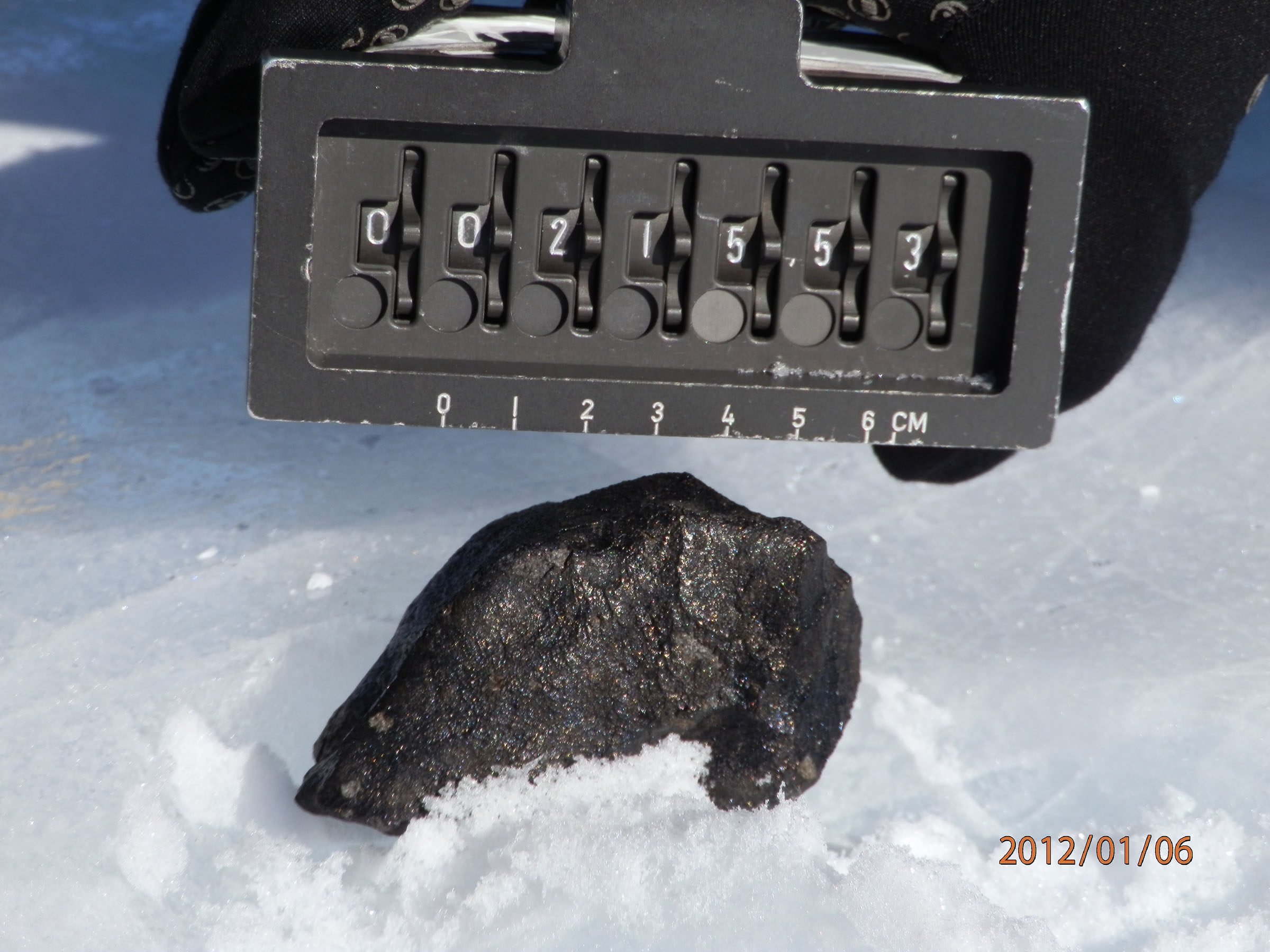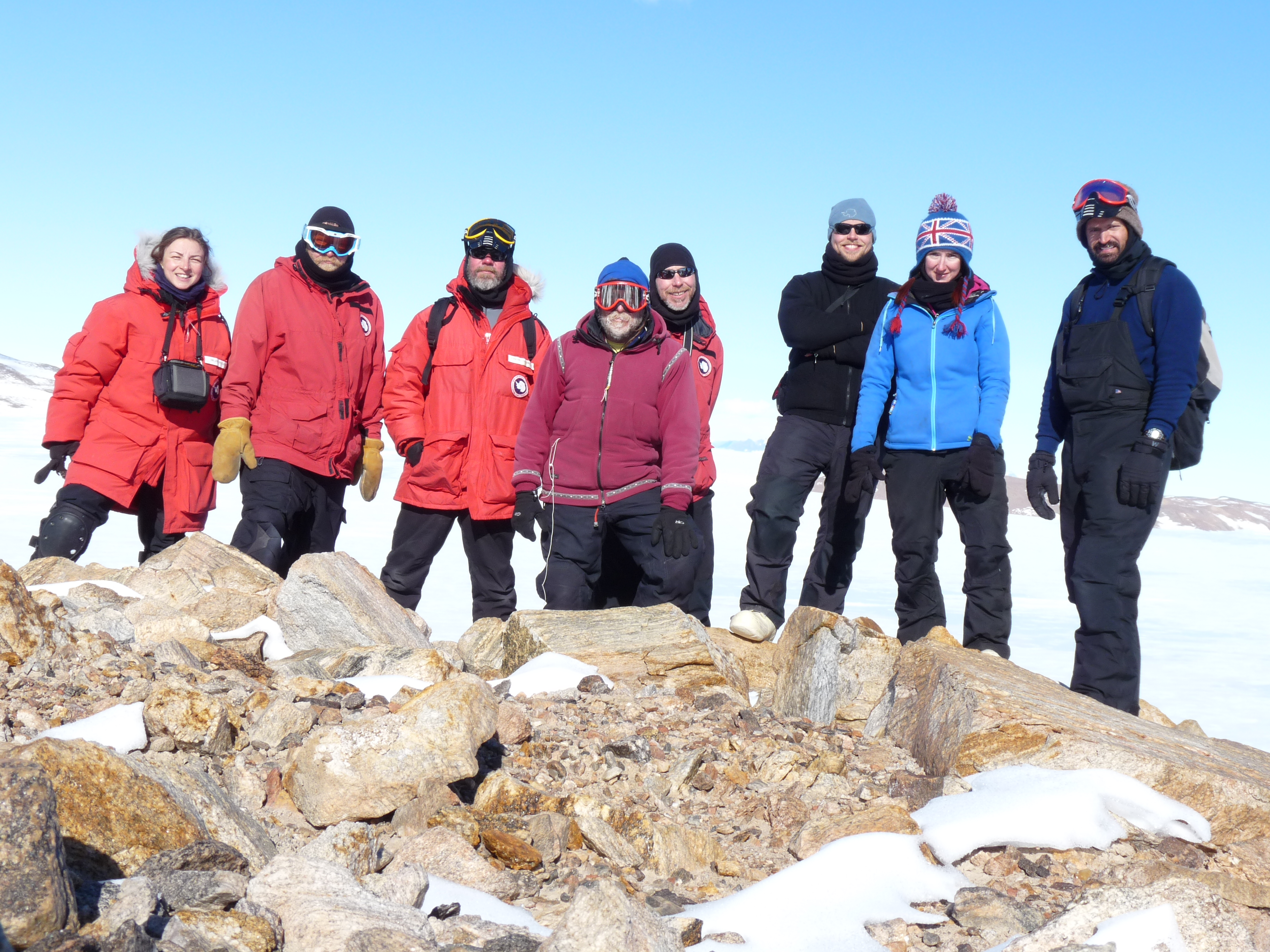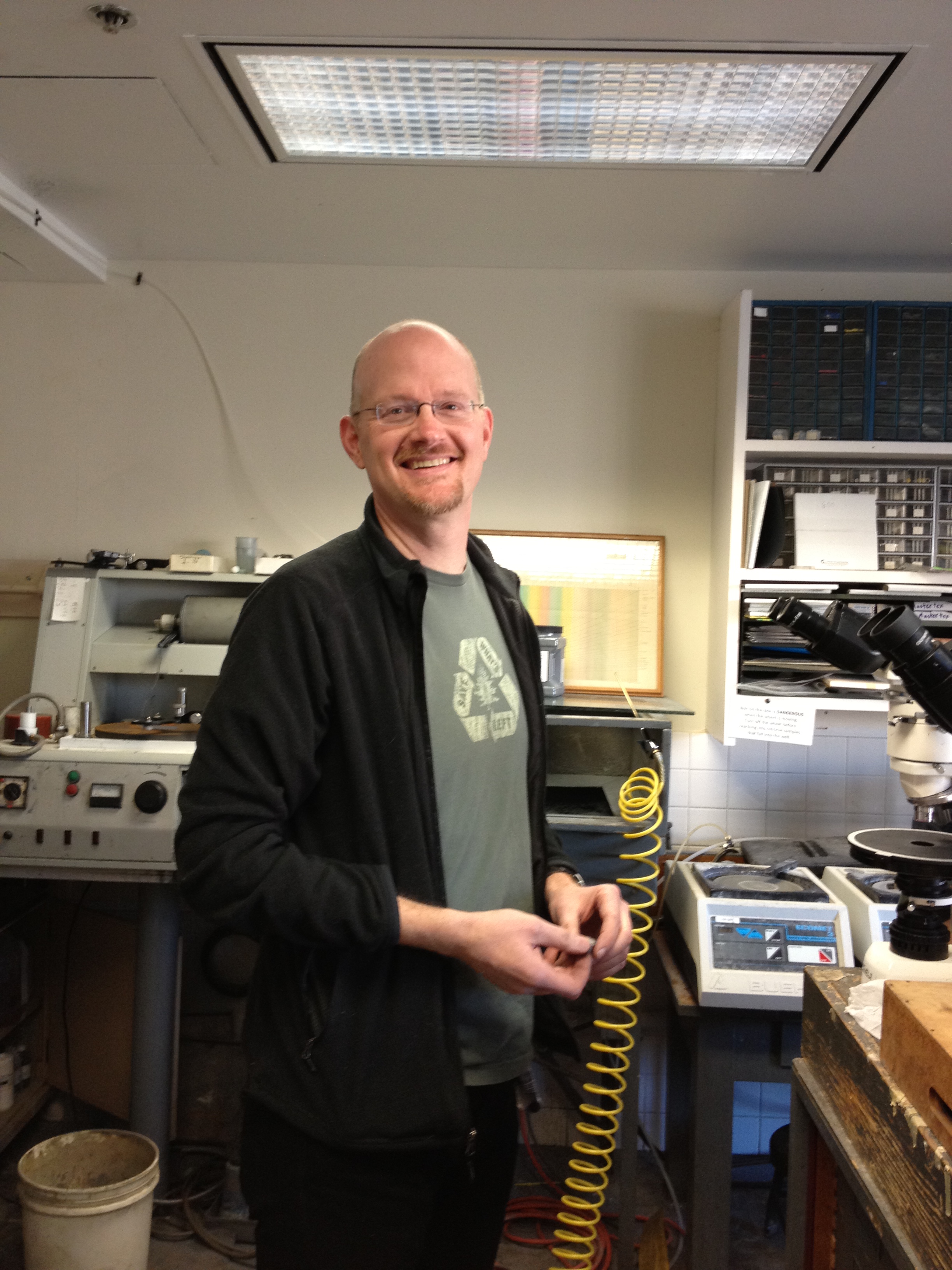Program News
Curator Comments
Kevin Righter, NASA-JSC
This newsletter reports 308 new meteorites from the 2009 ANSMET season from the Miller Range (MIL). The new samples include 25 carbonaceous chondrites (15 CO, 2 CV, 1 CK, 1 CB, and 6 CM), 1 EH6 chondrite, 1 EL6 chondrite, and an enstatite chondrite impact melt. Among the new achondrites are 1 ureilite, and 1 ungrouped achondrite. We aim to finish classifying the 2009 season samples in the next newsletter. There are a number of additional carbonaceous chondrites already recognized, but too late to be announced for this newsletter, so stay tuned for more Miller Range riches.
The meteorite collection received 93 requests for the Fall 2011 MWG meeting, and although most of the sample chips have been prepared and sent out, there are a number of thin sections that still are being prepared. Thanks for your patience during these busy times for the meteorite collection.
We would like to remind PIs of several of their responsibilities regarding meteorite sample loans:
- Please return any samples that have not been used for > 5 years.
- Please return thin or thick sections at any time when you realize your research on that section is finished.
- If you know you will retire soon or are no longer active in research, please prepare samples for return.
- If you have recently moved or changed addresses, please send us your new contact information, including a new email address.
- Please sign and return the sample assignment forms when you receive samples, that is the only way we know that samples have been received.
2011-2012 ANSMET Field Season Report
Ralph Harvey, Principal Investigator, ANSMET

One of many interesting achondrites that will be part of the MIL 11xxx sample collection.
The Miller Range icefields are one of the more scenic spots ANSMET has gone to recover meteorites, one of the most productive in terms of unusual specimens, and one of the more unpredictable in terms the weather and where meteorites are found. Roughly 10 days of reconnaissance in 1985, 1999 and 2003 yielded nearly 150 specimens from dozens of icefields of varying sizes stretched over a very large geographical area. Our first season of systematic searching (2005-2006) began with a 7-day storm on arrival, followed by several inches of snow, burying all the meteorites. No wind followed to blow it away, and less than 170 meteorites were recovered. Field teams in 2007-2008 and 2009-2010 enjoyed spectacular weather and together they brought 10x that 2005 haul, including lunar and martians and other fun stuff. In each of those seasons we found meteorites in improbable situations; on the slopes of mountains, on icefields barely the size of a tennis court, and in moraines cut off from the plateau by other moraines.
The recently completed 2011-2012 season continues the trend. Our first days in the field were greeted by heavy snows, limiting our ability to search the icefields at the northern end of the Miller Range, where we had planned to spend about a week.
A view in camp from the holiday wind storm at the end of 2011, showing snowmobiles on their way to full burial.
At the end of that week we had been able to search for only part of two days. Tired of waiting for a windstorm to clear the ice, we moved on to our second camp at the Southern icefields. Unfortunately, the snow followed us a few days later, adding a few more inches and making meteorite searches a sisyphean task (I apologize for that word; I guess we played a bit too much Scrabble). Over the holidays several days of 20-30 kt. wind got rid of a decent portion of the snow and created some awesome drifts in camp. I left the team the next day and of course, the weather was fine for most of the rest of the season.
In the end, we managed to search for meteorites on only about 15 days of the 42 we were in the field, not quite what we hoped for. That said, the Miller Range continued to amaze us, with meteorites showing up in yet more unusual settings, such as in windblown "rock dunes" along the edges of a glacier. The season's total was 302, less than half what I would have guessed but still respectable. And it does mark a milestone, putting us (barely) over the 20,000 mark for specimens recovered by ANSMET since 1976. We'll go back to the Miller Range sometime soon. Regardless of the weather, it's an amazingly productive site. Here's hoping that our experiences this year paid our weather dues for a while.

From right to left: Jake Maule, Katie Joy, Jesper Holst, Tim Swindle, John Schutt, Christian Schrader, Jim Karner, and Anne Peslier

Clockwise from upper left: Christian Schrader, Jim Karner, Ralph Harvey, Jake Maule, John Schutt, Katie Joy, Jesper Holst, Anne Peslier
Report from the Smithsonian
Cari Corrigan, Geologist (Dept. of Mineral Sci.)

Tim Gooding
This newsletter announces the classification of 308 meteorites (and 3 terrestrial rocks). Since the last newsletter, a small miracle has occurred and our thin section preparatory has been filled! We are extremely lucky to have been able to bring back Tim Gooding, our former thin section guru, from his brief stint at NIST. This means that with Nicole Lunning (our current contractor) and Tim both on hand, our thin section making capabilities are once again fully operational. You can only imagine what a great thing this is for us, as someone with Tim's expertise (and experience in making meteorite thin sections) is hard to come by.
An important piece of news that affects requests: The new curation facility at our offsite support center is now operational! We are still working out some of the bugs, but for the most part, we are back on track and should be able to fill requests within the next couple of months. Thanks to everyone for their patience during this lengthy construction process. We will now be much better prepared to serve your needs, and the meteorites are being stored in a better environment for future preservation.
